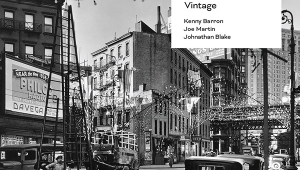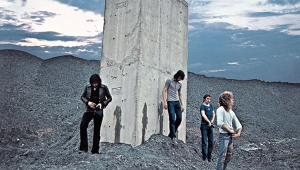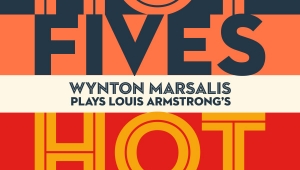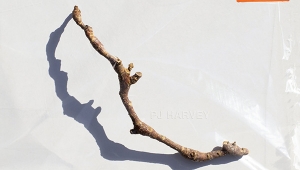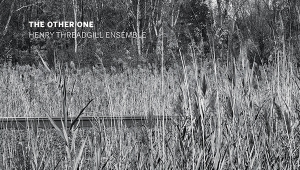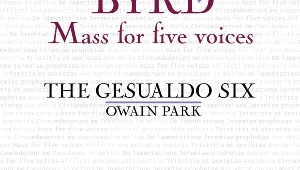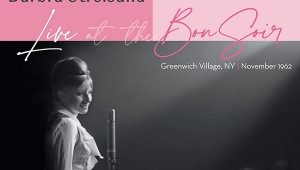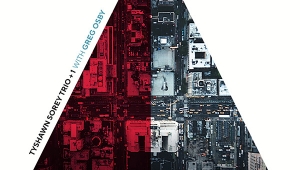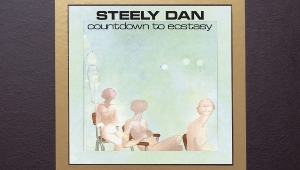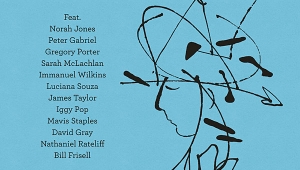| Columns Retired Columns & Blogs |
Recording of April 1989: The Symphonic Soundstage
The Symphonic Soundstage: The Art and Science of Recording the Orchestra
Excerpted: Strauss: Thus Spake Zarathustra, Dance of the Seven Veils (complete); Respighi: Roman Festivals; de Falla: Three-Cornered Hat, Nights in the Gardens of Spain; Prokofiev: Romeo and Juliet; Stravinsky: The Firebird; Lutoslawski: Concerto for Orchestra; Haydn: Piano Concerto 2, Cello Concerto 1
Various performers
Delos D/CD 3502 (CD only). John Eargle, eng. & prod. DDD. TT: 71:55
Excerpted: Strauss: Thus Spake Zarathustra, Dance of the Seven Veils (complete); Respighi: Roman Festivals; de Falla: Three-Cornered Hat, Nights in the Gardens of Spain; Prokofiev: Romeo and Juliet; Stravinsky: The Firebird; Lutoslawski: Concerto for Orchestra; Haydn: Piano Concerto 2, Cello Concerto 1
Various performers
Delos D/CD 3502 (CD only). John Eargle, eng. & prod. DDD. TT: 71:55
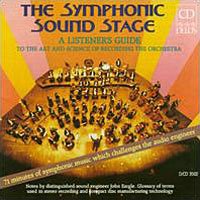 It is often said that anyone with a recorder and a couple of microphones can record an orchestra. It's true, assuming you can get permission to do it (another story entirely). But that statement fails to address an important question: "How well?"
It is often said that anyone with a recorder and a couple of microphones can record an orchestra. It's true, assuming you can get permission to do it (another story entirely). But that statement fails to address an important question: "How well?"
The rudiments of any skill can be learned from books. Practice can develop a fair level of competence. Beyond competence, however, the student is governed by his genes and/or family environment, depending on which theory of human potential you subscribe to. Whatever the reason, some practitioners of both disciplines never seem able to transcend mere competence, while others go on to become legends in their own times. John Eargle, chief recording engineer for Delos Records and producer of this fascinating recording, may or may not qualify as a legend, but he is obviously 'way past "a fair level of competence."
Most record companies, no matter how dreadful their orchestral recordings, treat the specifics of their recording techniques as trade secrets. With few exceptions, the idea of detailing in the jacket notes how a recording was made is as unthinkable as using a color photo of the producer's privates on the album cover. Yet here, for the first time, is a collection of 11 different recordings with accompanying notes documenting in reasonable detail how every one of them was "done." In truth, this would be of little interest to readers of this magazine if the recordings themselves were typical big-company dross, but these are superb recordings, from which other classical record producers could (and are hereby invited to) learn a lesson or two.
John Eargle is not quite a microphone minimalist. Like Keith Johnson, he does not feel constrained to confine himself to the purists' pair—two microphones and no more, regardless—if more than that seem called for. If one or another part of the orchestra sounds "weak," or the hall reverb isn't being picked up to his taste, he will not hesitate to fly as many additional microphones as he feels are needed to do the job right. The result is some of the best symphonic recordings that you'll find on CD. (All the excerpts are, of course, from Delos's extensive catalog.)
Spectral balance is right on the money, and the overall presentation is very realistic. There is no shrillness, no squawk, no bass shyness, and the dynamic range is as wide as the real thing. Bass is full and, at times, very deep, but with superb pitch delineation; there is never a trace of boominess or hangover. These recordings strike an almost ideal balance between detail (closeness) and blending (distance), and the ambience never intrudes on the music. You can definitely hear the uniqueness of each recording hall in all of these, yet I do not get from any of them the feeling—as I do from most Telarcs—that the music is subservient to the hall acoustics, rather than the other way around. Yet these are not the best orchestral recordings I have ever heard, and the the reason, I believe, is because they were not quite minimally miked.
Eargle seems convinced that a simple two-mike pickup cannot adequately capture the woodwind section of an orchestra. An additional stereo pair was used over the orchestra in virtually every one of these recordings, and it sounds like it. The woodwinds sound closer than the rest of the instruments, and that section of the orchestra sounds more dimensionally compressed—front to back—than the rest of the orchestra. The effect is fairly subtle, simply because the mixing was done with restraint, and may not be noticed by a listener who has not heard a lot of true two-mike recordings, but it is audible, and I don't much care for it.
I don't know why all recording engineers must fight tooth and nail to prevent a symphony orchestra from speaking for itself. Believe me, guys, an M-S mike or two ORTF-oriented cardioids can do the job, without help, if literal realism is really what you're striving for. Other than having them play louder, there is simply no way, without inserting some kind of digital delay à la Denon, that you can "bring out" a group of instruments without making them sound closer than the ones around them, and as far as I'm concerned, there is no need to try. If the woodwinds sound balanced to the conductor, then that's the way they should sound. Does it ever occur to any recording engineer that the instrumental balance he hears might possibly have to do with the frequency response of his loudspeakers or microphones? Or even, Heaven forbid, his own distorted judgment about what constitutes "correct" instrumental balance?
On the other hand, I find no fault with the use of an extra stereo pair to enhance the ambience of a "dry" hall—another trick that Eargle uses on a number of these recordings. But I do not like the double-arrivals of direct sounds that I hear when the ambience mikes are omnis placed far behind the main mike array. In my view, ambience mikes should be cardioids or, better still, hypercardioids, placed close to the main mikes and aimed toward the rear corners of the hall. This provides independent control of rear ambience relative to direct sounds, but gives much better integration of the two. And the directionality of the ambient mikes allows for some control of discrete echoes, on the basis of their directions of arrival.
These certainly aren't bad, or even mediocre, recordings; in fact, they're uniformly excellent. They are just not as good illustrations of real soundstaging as they could be—or as I have gotten from most of my own recordings of symphony orchestras. (I have never felt the need to use anything but a basic stereo pair.)
One thing that would have made this album even more useful would have been diagrams showing where the instrumental choirs were placed, although the imaging is good enough most of the time that you should have no trouble figuring this out yourself. The jacket notes are adequately detailed—much more so than with your average classical CD, but since I got only a sheaf of Xeroxed pages with my (pre-release) copy, I cannot report how many pages they ended up occupying.—J. Gordon Holt
- Log in or register to post comments


